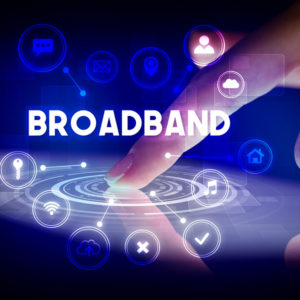As Ronald Reagan used to say, “The closest thing to eternal life on earth is a government program.” And that was long before the federal government spent $6.27 trillion last year, with a deficit of $1.38 trillion and an inflation rate of 6.04 percent — the consequence of too much money chasing too few goods.
Even the most wasteful federal programs rarely die. And even as fiscal excess pushes us to the brink of crisis, some in Congress continue to dream up new spendthrift and superfluous programs to dig our hole even deeper.
One particularly egregious example: Under the pretext of trying to expand rural broadband access, some Senate Democrats are pushing billions of dollars in new subsidies for electric utilities to build “middle-mile” broadband networks that won’t directly connect even a single unserved home.
It’s an unholy marriage of wasteful spending and crony capitalism — and fiscal conservatives in Congress should refuse to go along.
Middle-mile networks are the digital infrastructure connecting local internet networks with major backbone networks. If your home internet connection is like the street in front of your house, consider the middle-mile as the county road connecting your subdivision to the nearest superhighway.
But the fact is: With broadband networks currently reaching at least 93 percent of American homes and businesses, most communities already have robust middle-mile infrastructure. There are no data suggesting middle-mile traffic jams are a pressing telecommunications challenge requiring multibillion-dollar federal interventions.
Instead, just about everyone agrees federal policy should focus on building last-mile connections to the 7 percent of homes still not reached by high-speed networks. Without these last-mile connections, a shiny new middle-mile loop is just the Internet Age equivalent of the notorious “Bridge to Nowhere.”
That’s the obvious lesson of such failed experiments as the Florida Rural Broadband Alliance, which wasted $24 million on a middle-mile network that serves no one — or the Massachusetts Technology Collaboration’s 1,200-mile middle-mile loop, which went bankrupt after it couldn’t find enough paying customers to cover its operating costs.
Now, the next “Network to Nowhere” could be coming soon to a community near you — unless Congress shuts down plans to ramp up spending.
Fortunately, there’s a better way to help the hardest-to-reach communities and consumers to connect to high-speed internet.
It starts with extending last-mile broadband infrastructure to every rural home. The Infrastructure Bill earmarked $42.5 billion for such projects — on top of $350 billion from the American Rescue Plan Act that state and local governments can tap for broadband infrastructure projects.
Congress should let these amply funded programs work as intended before deciding whether billions more are needed.
Meanwhile, while well over 90 percent of Americans have high-speed internet on their doorsteps, only 76 percent subscribe. With public and private subsidies making service essentially free for low-income households, the most intractable hurdle is the lack of digital literacy that empowers people to understand why — and how — to go online.
Instead of spending billions of dollars more on politicians’ pet projects, it is time to mobilize what the great conservative thinker, Edmund Burke, called “the little platoons” of civil society — families, faith leaders, small businesses and civic associations — to promote digital skills and self-confidence.
Let’s pull together to build bridges to digital empowerment for every family and community — not broadband networks to nowhere.

